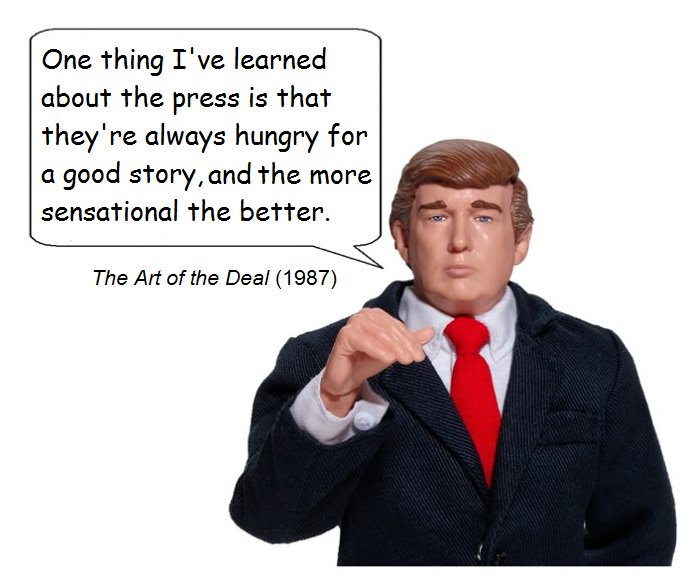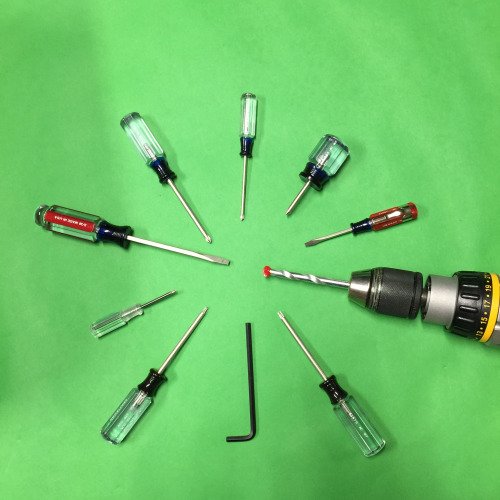This is the seventh, of an ongoing series, that seeks to understand the Powers of Persuasion.
Love him or Hate him, Trump is everywhere.

to previous Persuasion posts.
This Persuasion Series, is described in the introduction article Raise Your Steem Power Through Persuasion.
Scott Adams is the man behind the Persuasion Reading List and blogs regularly about how he thinks Trump is a “Master Persuader”.
Regardless about how you feel about Scott, he does bring up some interesting things to consider.
I first picked up reading Scott’s blog after a James Altucher post.
I knew about Scott from his Dilbert comics which I had long been a fan of before I had even heard of James.
When I clicked over to his blog article A Deeply Unscientific Test of Your Political Bias (Trump Persuasion Series), I found the following to be eye-opening.
It was in regards to the Republican selection of a candidate during the primary process and was written in December of 2015.
The following is an excerpt from the article along with the accompanying image:
“I went into my garage and spent approximately two minutes selecting tools that represent the main political candidates for U.S. president. See how quickly you can tell which tool represents which candidate. My hypothesis is that those of you following American politics will easily map the tools to the candidates. No real “thinking” required. The pattern matching (bias) will be immediate.”
“But before you start, remember to observe your own mental processes as they happen, to see if the “thinking” happens before or after you decide which tool is which candidate. I’m betting you’ll decide first and think second. See if you feel it happening that way.”(Emphasis added.)
“From the image below, identify the tool that maps to: Rubio, Cruz, Trump, Carson, Clinton, Fiorina, Christie, Paul.”

“My hypothesis predicts that you laughed when you saw the huge drill next to the other tools because you instantly knew it was the Trump tool. No thinking required. But I’ll bet you started feeling your rational mind kick-in to identify Cruz and Rubio. And that’s my point.”
This got my attention and eventually would wind up with me reading more about Persuasion, bringing up back to today’s topic: Trump: The Art of the Deal.
As the Tump image above suggests, if you like a good story, then this is the book for you.
For this post, I decided to take a different approach and write it as I read along and pull out things that I think are worth your time or actually useful.
After the several pages of what to me seem like “filler story”, I am not holding out hope for much.
If you like stories, which I do, it is interesting, but we are here for something more.
We don’t want to know about Trump’s specific deals, we want to know techniques.
Sure it’s an introduction building credibility and trust that his way works, but we want guidance on persuasion.
Onward.
Chapter 2 looks more promising with “The Elements of the Deal”:
The following will follow this formula:
Element - My boiled down explanation
There are 11 elements discussed:
Think Big - Aim high and push for more than
Protect the Downside and the Upside Will Take Care of Itself - Entrepreneurs take risk, but look to reduce risk by finding ways to structure deals to protect themselves from loss
Maximize Your Options - Be flexible and not “attached to one deal or one approach”. Personally this has worked out for me several times.
Know Your Market - Get real feedback from people first.
Use Your Leverage - Don’t be desperate to make a deal. To deal from strength make sure you have something to offer that the other side wants or needs.
Enhance Your Location - Don’t pay over pay for things, but instead “enhance” through marketing, what you are able to get for a good deal.
Get the Word Out - “Generate interest” and “create excitement” and use “bravado”. People have to know about you and your product or service to be successful. To be persuasive and influential we need people talking about us or sharing our steemit articles. We’ve all heard the phrase “there is no such thing as bad publicity” and Trump obviously uses this to this day and as he explains “Instead, when a reporter asks me a tough question, I try to frame a positive answer, even if that means shifting the ground. For example, if someone asks me what negative effects the word’s tallest building might have on the West Side, I turn the tables and talk about how New Yorkers deserve the world’s tallest building, and what a boost it will give the city to have that honor again” (pp. 57-58).
I stopped down on this one because reframing is a huge persuasion technique.
Fight Back - Sometimes others tell you “no” because it’s easier for them, to be successful you will need to pushback against the negative pressures.
Deliver the Goods - As much as the media will tell you Trump is a “con man”, he knows that “You can’t con people, at least not for long. You can create excitement, you can do wonderful promotion and get all kinds of press, and you can throw in a little hyperbole. But if you don’t deliver the goods, people will eventually catch on” (p. 60). Essentially, telling the truth is important and having integrity matters.
Contain the Costs - You have to spend money to make money, but don’t overspend. Be careful with where you money goes and call out people who are trying to overcharge.
Have Fun - “Life is very fragile, and success doesn’t change that” (p. 63). Don’t take anything too seriously. Overanalyzing your life or what happened in a deal or went wrong will suck the joy out of life.
Chapter 3 finds us with more background stories about Trump “growing up” and Chapter 4 is another tale but with a point that prudence pays.
Not much to see here, so let’s move along.
Chapters 5, 6, and 7 have more stories, which may have some value, but ain't nobody got time for that.
Chapter 7 did have some interesting past pictures of Trump.
More stories for Chapters 8, 9 and 10.
I am going to be real honest. I didn’t read all these stories so if you miss out because of me, my bad.
However, if you are looking for some interesting entertainment for reading, they are compelling.
I did scan them, but I have other things to do today…
And I doubt they have an useful lessons.
More of the same in Chapters 11, 12, and 13.
Finally in the final chapter, chapter 14, we get a description on how the deals turned out for Trump.
This is his “scorecard” where he “scoreboards” the rest of us…
The Art of the Deal, from what I could tell was more a picture of how great Trump is at making deals.
Which if you can glean something from it, mostly it would be to put out a big opening offer and leave plenty of room to work out finer details later.
Ultimately this is a good book if you are looking to fill a few hours in a waiting room, but for those of you, like me, who are always on the go, we will keep on going on…
But, hey, stories sell.
Just look at book of Salespeople like Zig Ziglar and his Secrets of Closing the Sale or Dale Carnegie’s famous How to Win Friends & Influence People.
I recommend both of those books, but they are chock full of stories to illustrate points.
If you have the time, enjoy!

Please follow me, @strangerarray, because talk is cheap and writing is cheaper...
Also feel free to send donations to: PayPal.Me/michaelpaine because donating to me is a good investment.
Please check out the previous discussions on Persuasion:
Introduction to Persuasion Series
First Flight: Imagination and Persuasion
Illusions: The Adventures of a Reluctant Messiah
Influence by Robert B. Cialdini -- Part 1
Influence -- Part 2: Resistance to Persuasion is Futile. Part 2 of 2
How to Fail at Almost Everything and Still Win Big by Scott Adams
Coming Soon….TBD
Hey y’all for more great content check out my friends:
(All robot images from steemd.com)



















